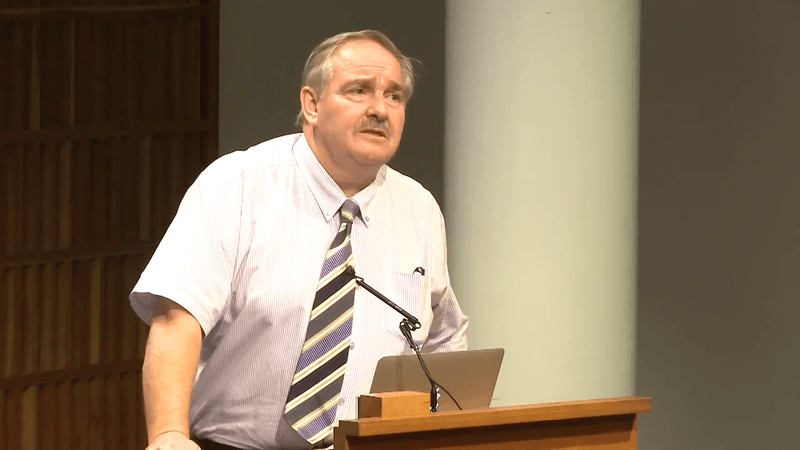
This lecture, ‘Why Study Psychedelic Drugs?’, is from ‘A Discussion on Scientific Research with Psychedelic Drugs’, a conference chaired by Professor David Nutt at Imperial College London (12/06/2013).
In this lecture, Professor David Nutt outlines why the scientific investigation of psychedelic drugs is worthwhile and valuable. He points to the fact that actual scientific discoveries have been catalysed because of the influence of psychedelic chemicals. He referred to the case of Francis Crick, who co-discovered the double-helix shape of the DNA molecule. Crick admitted that he was under the influence of LSD when he made this incredible discovery. It is not clear whether Crick was given this powerful insight in the form of a visualisation, a moment of revelation, a change in thought patterns, or perhaps even after his LSD trip had finished. However, what is clear is that Crick attributed his discovery to LSD and the effect that it had on his consciousness.
Nutt also refers to the case of Kary Mullis, whose discovery of the Polymerase Chain Reaction (PCR) won himself the Nobel Prize in Chemistry in 1993. Albert Hofmann, who first synthesised LSD (and who was also the first person to have an LSD trip) said that “he was told by Nobel-prize-winning chemist Kary Mullis that LSD had helped him develop the polymerase chain reaction that helps amplify specific DNA sequences.” Mullis has also expressed something similar in his own words: “What if I had not taken LSD ever; would I have still invented PCR?” He replied, “I don’t know. I doubt it. I seriously doubt it.” (Taken from the BBC documentary Psychedelic Science).
“No problem can be solved from the same consciousness that created it” (Einstein). Although Einstein never came across psychedelics, his quote in this instance can support their use. If a change in thinking is required, or helpful, in solving a problem, then psychedelics can be a useful aid. They are perhaps the most reliable way to instigate a change in thinking.
Before the ban on LSD research, 1,000 clinical papers were published about it. Nutt compares the ban on LSD research to the ban on the heliocentric view of the universe in the 17th century.
Nutt argues that psychedelic drugs should be rigorously studied for their therapeutic and medical benefits. He refers to Grob et al.’s work on advanced end-stage cancer patients. These patients were given a dose of psilocybin and they found that anxiety was significantly reduced 1-3 months after treatment, along with a reduction in reports of depression.
Nutt agrees with the assertion of psychologist William James that the brain cannot be fully understood without understanding altered states of consciousness. He also agrees with the opinion of the famous LSD researcher and psychotherapist Stan Grof who says that psychedelics are similar to tools such as microscopes and telescopes – they allow us to zoom in an out of aspects of the mind.
All hallucinogens are 5-HT2A agonists, which means that they bind to the 5-HT2A receptors in our brain – that is why they have an effect on our consciousness. Also, these chemicals do not necessarily increase or decrease activity in the brain; rather, some neurons fire (they are excited) and some do not fire (they are inhibited). The brain seems to have a natural balancing system, whereby excitatory activity is balanced by inhibitory activity.
Professor Nutt asks the very important question, why do these receptors exist in the first place? Nutt’s answer is that serotonin, a vital neurotransmitter that regulates mood, sleep and memory, can also stimulate these receptors. Nutt goes on to speculate that psychosis could be an endogenous release of too much serotonin.
Professor Nutt was involved in an Imperial College study on the effects of psilocybin on the brain, making use of brain imaging techniques. There was shown to be a decrease in something called rCBF, which means there was decreased activity in the connecting hubs in the brain. There was no increase in activity in the visual cortex, which is strange, considering that the visual and hallucinatory nature of psilocybin would seem to suggest an increase in visual cortical activity. The magnitude of subjective effects – or how strong the experience was – was related to a decrease in blood flow in the brain.
A separate study on psilocybin in Cardiff made use of an MEG which measures electrical activity in the brain. This study was consistent with the finding of Nutt’s study that psilocybin reduces activity in many “hubs” in the brain. The Cardiff study revealed that this chemical reduces electrical activity in these hubs as well.
Nutt argues that there is a great deal of evidence that psilocybin can be useful in treating cluster headaches. This is a middle age disease which afflicts 1000s of people in the UK – many will actually commit suicide because they cannot deal with the constant suffering and discomfort. Despite the evidence in favour of psilocybin’s efficacy, the UK support group for cluster headaches refuse to support research into the chemical because it is illegal. This stance is completely at odds with the group’s commitment to those suffering from this condition. For a more personal story on how psilocybin has been used to treat cluster headaches, there is a segment about it on the National Geographic’s series Drugs Inc. (the episode is called Hallucinogens).